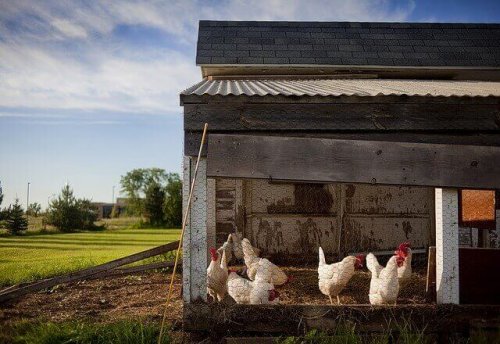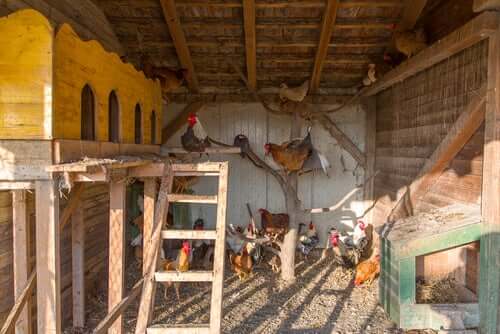Seven Tips for Raising Chickens in the City

Several years ago, the trend of urban gardens began in the cities as a strategy to get good quality fruit and vegetables –without pesticides and other toxic chemicals. Now hen houses are also taking over the urban landscape and the task of raising chickens in our backyard is a dream come true for many of us.
Chickens are living, sentient beings and, if you’re about to build and install a chicken coop in the city, then you’ll have to provide them with the best possible conditions. Here are some tips for raising chickens in the city:
1. Before raising chickens in your backyard, check your county’s regulations
Most urban towns regulate residential livestock through a series of animal codes aside from land development regulations. However, more jurisdictions are adding urban livestock provisions to their zoning codes every day.
While some have adopted a comprehensive set of regulations addressing all types of farm animals, others have focused only on one type of animal. Chickens or bees, for example.
Before you begin, make sure you have enough space to install a chicken coop and time to look after the birds.
2. Make a budget

Calculate the costs of setting up a hen house. Include things such as buying chickens, materials, feed, and nests in your list. After this calculation, make another list of monthly expenses, such as food, veterinary care, unexpected damage, etc. It’s very important to know you can cover all the expenses before building a chicken coop.
It’s also necessary to have an approximation of the production of eggs that you expect to obtain in order not to get more animals than you need. The hens lay eggs until they fill their nests, so if you take away some of them, then this will affect their production. In general, every chicken can lay about 300 eggs a year –about one per day.
3. Raising chickens: Building a chicken coop
Before you build a chicken coop you must take into account the climatic conditions in your area. The hen house should be safe and comfortable for your birds. In addition, it’s important that there’s good ventilation.
Here’s a list of a chicken coop’s most basic features, and the materials you’ll need to build one:
- Material that withstands harsh weather. For example, galvanized steel, PVC and treated plywood. The roof should be waterproof.
- Chicken wire. You’ll need to build a fence with an outdoor perimeter where they have free range to eat, walk and peck. Dividing the interior and exterior spaces of the pen is very important for the chickens’ health. For example, they’ll eat, drink, walk and peck the ground outside, and they’ll mainly use the interior area to sleep and lay eggs.
- Perches or sticks. Place them at a height which the chickens can easily climb to sleep on.
- Nests. You’ll need a comfortable material that’s well insulated and disposable. Straw or pine needles, for example.
- Any boxes you can use as nests.
- A disposable substrate for the ground. The ground inside a hen house is covered by excrement and feathers daily. So, it’s best to use a substrate you can discard like wood chips and shavings.
- Place feeders and troughs in the outer fencing to save space.
- If you don’t care to make a hen house from scratch, there are some prefab ones. They come in various designs and materials. Of course, make sure to plan for future growth.
4. How to select your chickens

If you’re in the business of raising chickens, then you’ll need a handsome rooster who’ll fertilize their eggs. Here you’ll also have to consult the regulations in your neighborhood. As you know, roosters are loud and often generate conflict with the neighbors.
There are many various breeds of chickens: egg-laying breeds, meat breeds, friendly breeds, pretty breeds, Bantam (space savers). Each type of chicken has its own peculiarities. Make sure you get them at a trustworthy place.
5. Raising chickens: Make sure they all have enough room
The distance between nests is important, as is having an outdoor space where they can walk freely during the day. The nest area should be at least a square foot for every four hens. Note that the hen house has to be somewhat elevated to avoid humidity.
6. Keep everything tidy
- Always make sure your chickens have clean, fresh water at their disposal.
- Then, remove any excrement and feathers from the ground.
- Check they’re all eating every day and be on the lookout for changes in their behavior.
- Count them every day and do regular checkups to find out if they have any pecking-wounds and check their feathers for any damage they may have.
7. Consult a veterinarian if there are any health concerns
Coccidiosis is a very common disease in domestic birds. Coccidia is a parasite that affects a hen’s intestinal tract. Call a veterinarian and isolate the affected chickens if you see any symptoms, it’s highly contagious. Disinfect the chicken coop and wash your hands thoroughly afterward.
As you can see, raising chickens, or any other livestock in an urban area is no easy task. Make sure you can do it before investing space, time, money and love in it.
All cited sources were thoroughly reviewed by our team to ensure their quality, reliability, currency, and validity. The bibliography of this article was considered reliable and of academic or scientific accuracy.
- Real Decreto 3/2002, de 11 de enero, por el que se establecen las normas mínimas de protección de las gallinas ponedoras. BOE.es
- Parra, S. La razón de que las gallinas pongan un huevo cada día. Xatakaciencia.com (2016)
- Razas de Gallinas en Venta. Finca Casarejo. Fincacasarejo.com
- ¿Cómo hacer un gallinero?. comunidad.leroymerlin.es